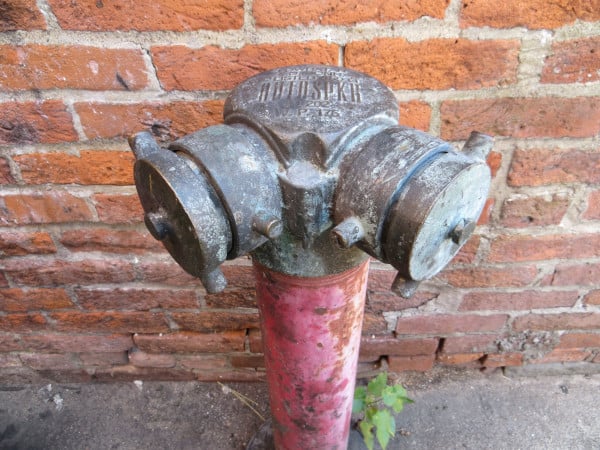Fire protection jargon and common misunderstandings make FDC replacement a struggle for many purchasers
A fire department connection, also known as an FDC and sometimes called a “Siamese connection,” delivers water to fire sprinkler and standpipe systems when it’s needed most. But some buyers, including many of our customers, find the process of replacing one confusing.
In this article, we look at FDCs from our customers’ perspectives, answering frequently asked questions about this important piece of fire protection equipment. What do you need to buy? How do you know you’re getting the right fire department connection? These questions and more are answered in this blog.
In the market for an FDC or components? Browse our selection of fire department connections, including the essential parts for flush, freestanding, and exposed assemblies—as well as must-have accessories like identification plates, FDC caps or plugs, swivels and snoots, and FDC signs.
You don’t need to be a fire professional to understand an FDC
Fire protection industry terms can make replacing a fire department connection daunting. What’s an “open snoot?” Is it the same as a “swivel adapter?” How can I tell if my FDC is flush, exposed, or freestanding?
It’ll be easier to answer these questions with the following in mind: the parts of any fire department connection accomplish the same three goals. For an easy example, let’s look at an exposed, single-inlet fire department connection. With only three parts, this FDC can:
- Guide water from a hose to a pipe serving the water-based fire protection system inside a building
- Prevent damage, clogs, and blockages to the building’s pipes and the FDC’s parts
- Tell firefighters where the water goes—to a fire sprinkler system, standpipe system, or both
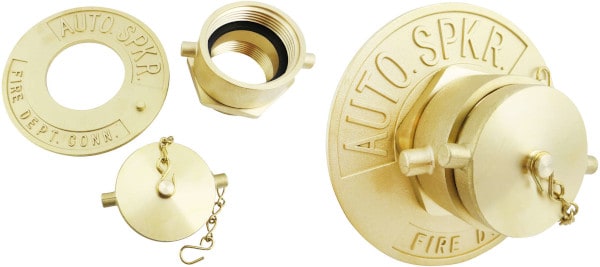
Many FDCs, however, can connect to more than one hose. These models include one or more clappers—hinged discs within the body. A clapper stops water entering one inlet from exiting through another. Two otherwise identical fire department connections may come in single-clapper, double-clapper, and even triple-clapper forms.
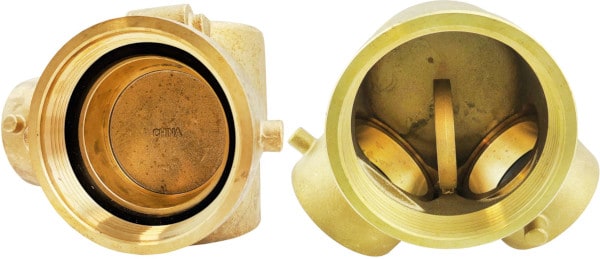
Easy identification and repair are hallmarks of exposed and freestanding FDCs
With an exposed fire department connection, all of the replacement parts you’re likely to purchase are found on the building’s exterior—including the large metal body, swivels, plugs or caps, and the identification plate. Each exposed FDC features only two operating components: swivels—the rotating, gasketed parts that connect to fire hoses—and a body, which connects between these swivels and the pipes within the building.
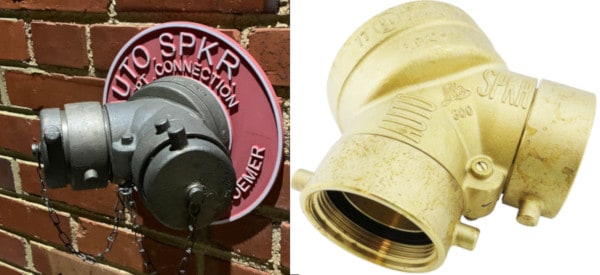
One of the fortunate things about working with an exposed FDC is that purchasers can easily see most of the components. The number of inlets, the outlet’s position, the body’s shape, and the engravings are all visible. Further, the swivels connect directly to the body. The body’s openings, or inlets, have a smooth indentation for a small (set) screw and ball bearings used to keep the swivels secure and spinning freely.
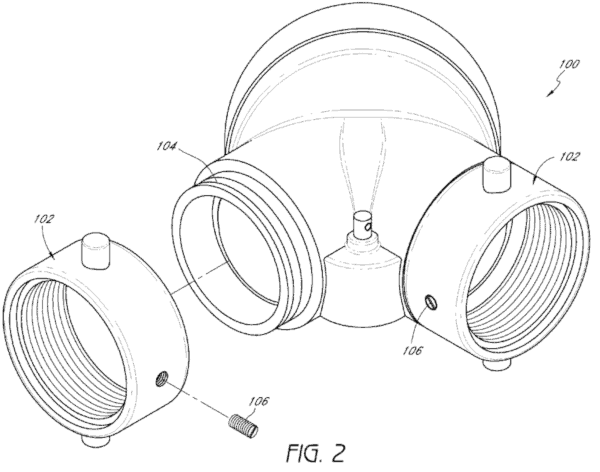
Like exposed FDCs, freestanding FDCs are easy to identify. However, they stand on a pipe protected by a metallic sleeve. While retailers sell “freestanding FDCs,” most freestanding fire department connections consist of exposed FDC bodies (with a right-angled outlet) and a sleeve—which means that consumers can also purchase those parts individually.
If you need to replace a swivel, that’s often a simple fix—and we’ve created this handy guide to replacing an FDC swivel to help you do it.
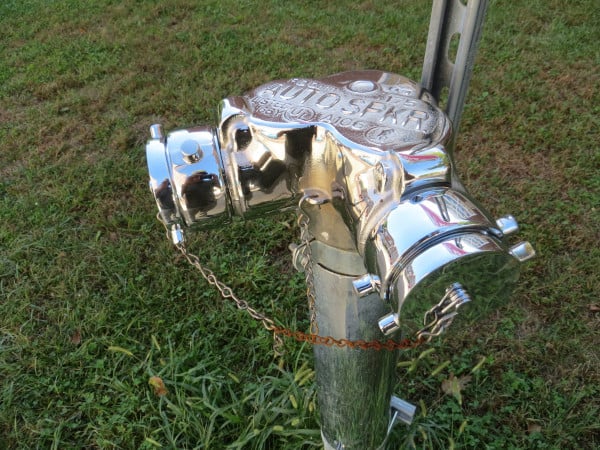
Connecting swivels to the body can prove challenging with flush FDCs
A flush fire department connection conceals the body—and the hole in the wall—with a large identification plate. But a flush FDC’s swivels don’t connect directly to the body. Instead, these FDCs use a long, threaded nipple to connect the body to the swivel, which ultimately serves as the connection between the FDC and the fireman’s hose.
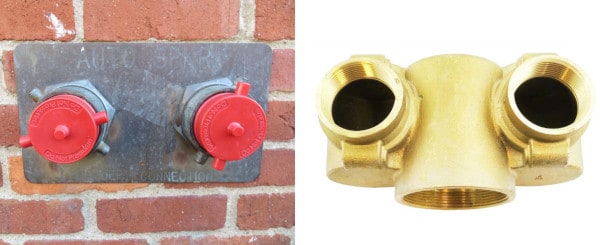
The most basic type—called an “open snoot” swivel adapter—has a threaded end that connects to the body (typically with National Pipe Thread, or NPT) and a swivel. A “check snoot” or “check-type snoot” has these parts and a small check valve in between. Like a clapper, this valve prevents water from flowing in the wrong direction.
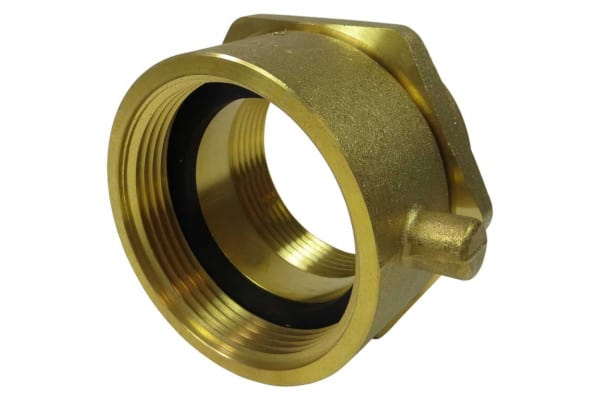
These swivel adapters are connected to a flush FDC’s body with short lengths of pipe or pipe nipples—and that’s where things get tricky. Because wall materials vary in thickness, the distance between the body and the adapters varies from building to building.
To close that distance, installers typically use short lengths of pipe called nipples. Whether they’re custom-made or prefabricated, the nipples used must be able to reach from the threaded end of the open adapter to the body itself.
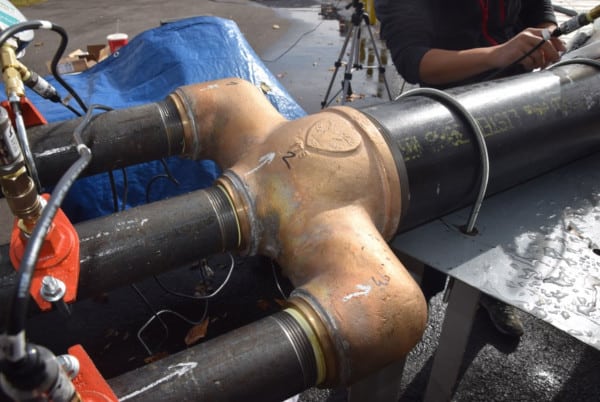
Orientation is critical—but this information can be tricky to find with flush models
This leaves one big issue for purchasers of flush fire department connections: orientation. Pipes leading to the fire sprinkler or standpipe system may be above, below, or behind the FDC. So, manufacturers offer two kinds of flush FDCs:
- Top/bottom orientation, with outlets at a 90-degree angle to the inlet(s)
- Back-outlet orientation, where the outlet and the inlets face opposite directions

To find out, facilities managers may need to remove the identification plate to determine the FDC’s orientation. Alternatively, they might spot it in the fire riser room, where many critical fire sprinkler system components are located.
Buyers who find the right FDC type also need to make the right decisions about sizing and signage
Common sizing errors lead to incompatible inlets
Over the years, we’ve found that fire department connections with two swivel sizes are consistently in demand: 2 1/2” and 3”. Unfortunately, customers often order FDCs with 3” swivels when they really need 2 1/2”. The reason is simple: they’re measuring in the wrong place.
Only the diameter of the inside waterway counts. That correct measurement can be taken in one of two places:
- Inside the FDC’s inlet, with no swivel attached
- Inside the back of the swivel
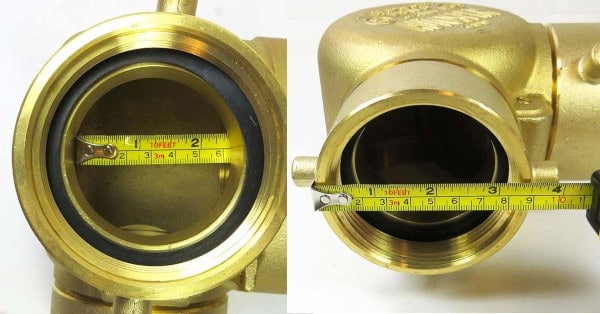
2 1/2” is a particularly common size for a reason: the National Fire Protection Association (NFPA), which authors much of the model fire code used by today’s state and local governments, has made it standard for most FDCs. However, the 2 1/2” swivel isn’t universal—and it’s far from the only option on the market. Your local government has the final say, so choose connections that are compatible with your local fire code.
Plugs or caps must also be the right size
Another common replacement component that must be sized right with the above measurement is the FDC plug. Understanding the size (2 1/2”, 3”, etc.) is critical to ordering the right model. Plugs are commonly constructed of brass and include a chain that connects to the FDC’s body so that when a plug is removed, it stays near the FDC. Plugs are also available in cast iron or aluminum, which makes them less appealing to thieves.
An inexpensive alternative to plugs is called a “breakable cap” or “break cap,” which connects to the swivel using eye bolts and can easily be broken (hence the name) by a firefighter’s tool for access. We go over these options in detail in our previous article: “FDC Caps or Plugs – What are My Options?”
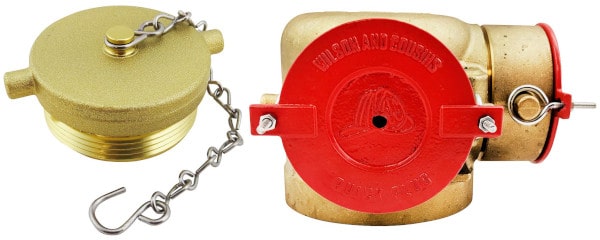
Finally, if you live in New York City, the government mandates a specific color of plug to correspond with different system types. Green represents Auto Sprinkler, Red is Standpipe, and Yellow is Combination Standpipe and Auto Sprinkler. Other jurisdictions may have specific color requirements, so check with your local authority having jurisdiction (AHJ) to be sure. You can find all of QRFS’s threaded plugs and bolt-on breakable caps here.
Code-compliant FDC identification takes three forms: branding, plates, and signage
Properly identifying an FDC makes life easier for fire professionals—and in many jurisdictions, it’s required. Where NFPA 13: Standard for the Installation of Sprinkler Systems is mandated by code, for example, FDCs for fire sprinkler systems must have all three of the following:
- Raised or engraved letters at least one inch tall—on a plate or fitting—identifying the system (2022 edition of NFPA 13, section 16.12.5.8.1)
- Signs indicating the pressure required to fully supply the system with water, unless that pressure is less than 150 PSI (10.3 bar) (16.12.5.8.2 – 16.12.5.8.3)
- Signage telling firefighters what part of the building an FDC serves—if it serves only part of a building (16.12.5.6)
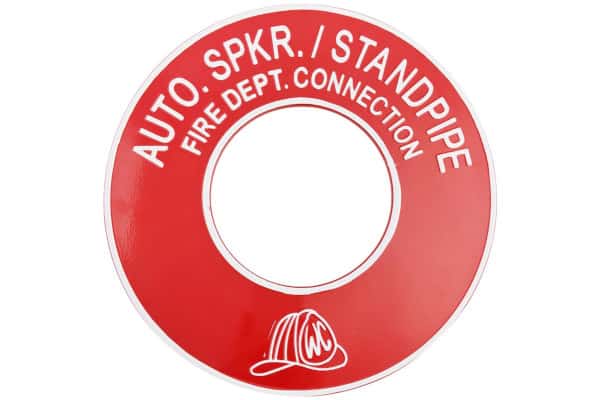
The signage requirements for FDCs serving standpipe systems are similar under the 2019 edition of NFPA 14: Standard for the Installation of Standpipe and Hose Systems. As listed in section 6.4.5, they differ in three respects:
- NFPA 14 doesn’t specify that signs identifying the system type be on a plate or fitting—just that a sign is required with letters at least 1″ high. Like the NFPA 13 rules, they must indicate the system served (“STANDPIPE,” “STANDPIPE AND AUTOSPKR” or “AUTOSPKR AND STANDPIPE”) (2019 edition of NFPA 14, sections 6.4.5.2 and 6.4.5.2.1 )
- In addition, signs for manual standpipe systems must “indicate that the system is manual and that it is either wet or dry” (6.4.5.2)
- All standpipe systems need a sign indicating the pressure required “at the inlets to deliver the standpipe system demand” (6.4.5.2.2)
- If the FDC serves multiple structures or locations, a sign must provide that information (6.4.5.3)
Let QRFS make choosing an FDC easier
Our customers usually know what they’re after—they’re just a word or two away from helping us understand what it is! If you’d like to learn more, check out our articles on FDCs. And this article was written in partnership with author and fire protection engineer Joe Meyer, who provides the fire protection system designer’s perspective to choosing an FDC at the MeyerFire.com blog.
And if you’re stuck, feel free to call us at +1 (888) 361-6662 or try sending us a picture of what you’re looking for to support@qrfs.com.
View our selection of flush, freestanding, and exposed fire department connections, FDC identification plates, FDC caps and plugs, replacement swivels and snoots, and FDC signs.
This blog was originally posted at blog.qrfs.com. If this article resolved your FDC questions, check us out at Facebook.com/QuickResponseFireSupply or on Twitter @QuickResponseFS.


